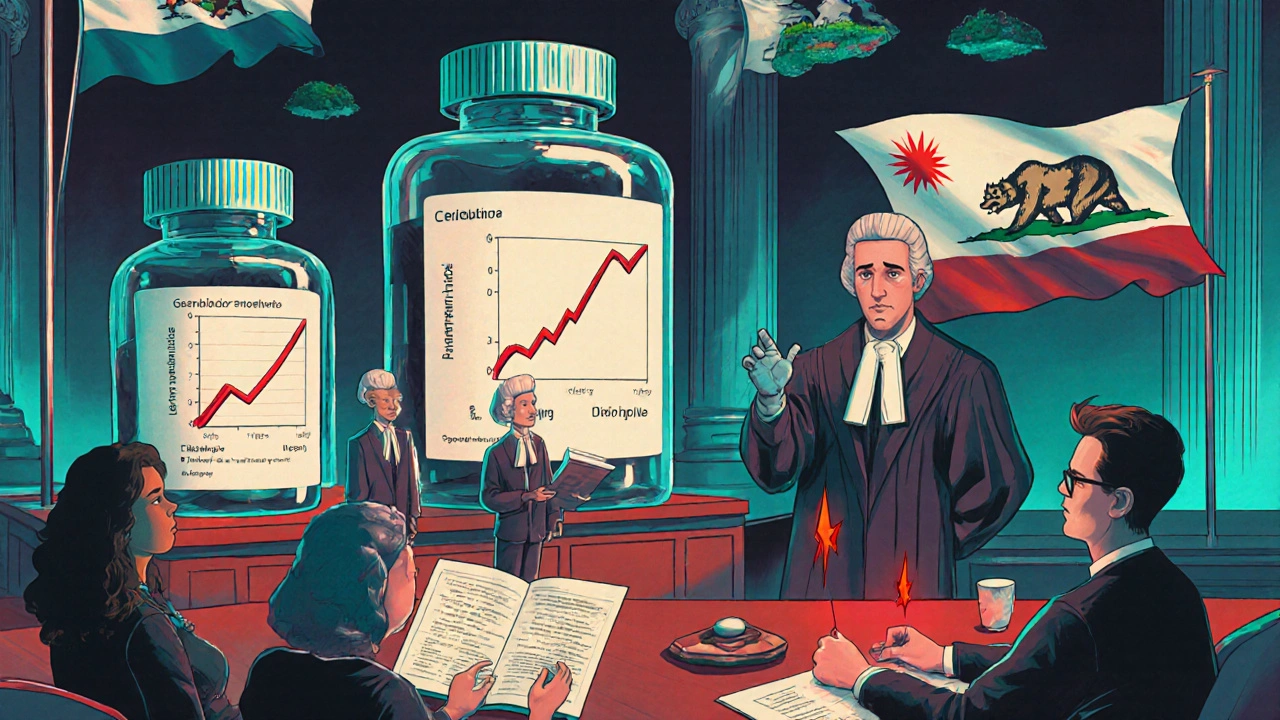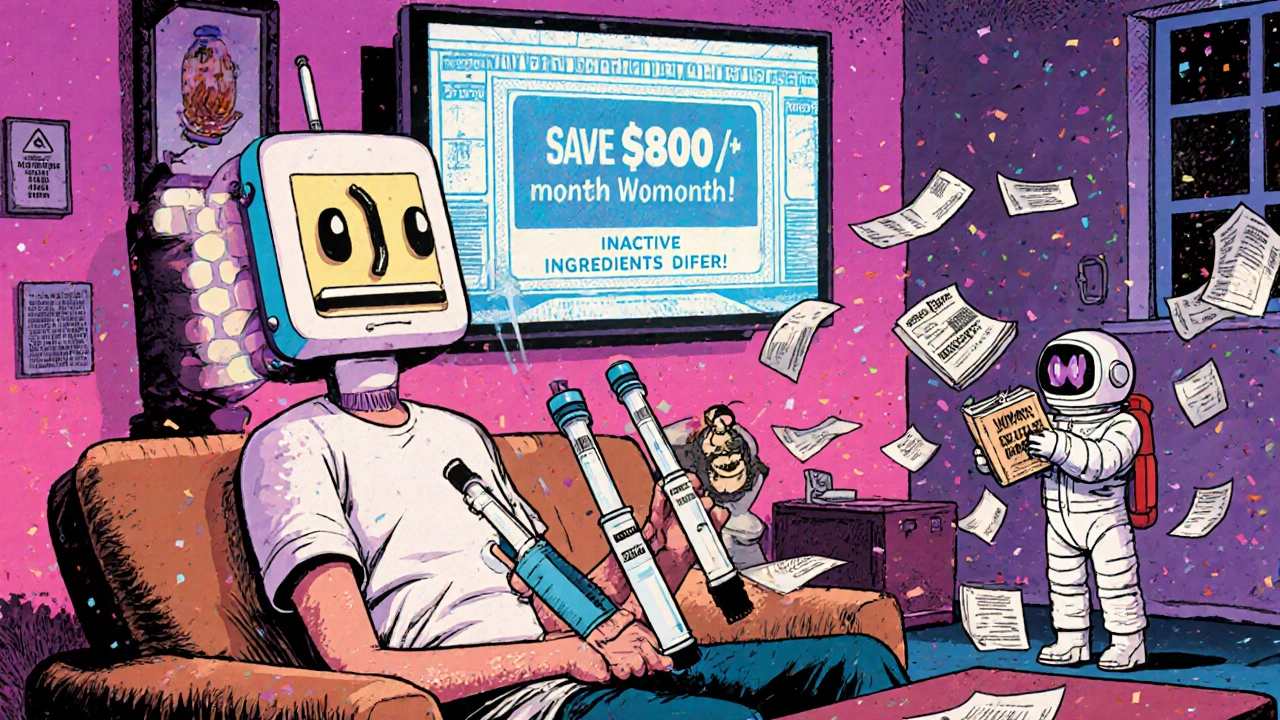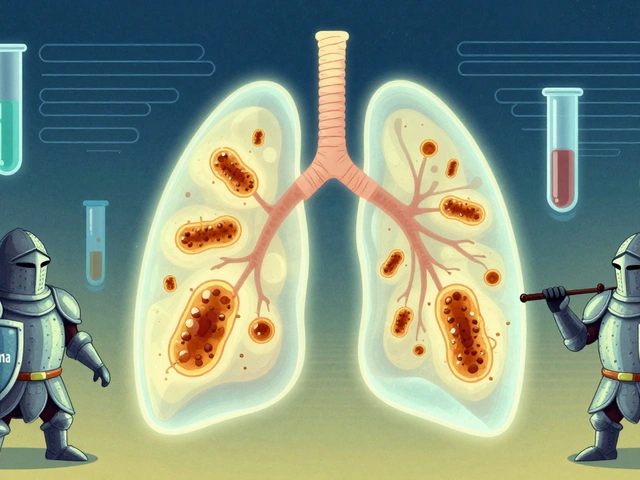When you pick up a prescription for insulin or a biologic for rheumatoid arthritis, you might not realize the pill bottle in your hand could be a completely different product than what your doctor prescribed - and that’s by design. In the U.S., some biosimilars aren’t just similar to the original biologic drug; they’re officially labeled as interchangeable. That means your pharmacist can swap it out without calling your doctor. But here’s the catch: not all biosimilars are created equal, and not every state lets pharmacists make that switch on their own.
What Makes a Biosimilar Interchangeable?
A biosimilar is a copy of a complex biologic drug - things like Humira, Enbrel, or insulin - made from living cells, not chemicals. Unlike generic pills, which are exact copies of small-molecule drugs, biosimilars can’t be identical. Their manufacturing process is too complex. But they’re still required to be highly similar in structure, safety, and effectiveness to the original. Interchangeability is a special FDA designation. It doesn’t mean the biosimilar is better. It just means the FDA has reviewed additional data showing you can switch back and forth between the reference drug and the biosimilar multiple times without increased risk or loss of effectiveness. This isn’t just about being close in effect - it’s about proving that switching doesn’t cause harm. To get this label, a company must run switching studies. These aren’t simple comparisons. They involve giving patients the original drug, then switching them to the biosimilar, then switching them back - at least twice - and monitoring for any changes in safety or how well the drug works. The FDA requires statistical proof that there’s no clinically meaningful difference after those switches. Only then can a biosimilar be labeled interchangeable. As of November 2023, the FDA has approved 41 biosimilars. Only 10 of them have interchangeability status. The first was Semglee, an insulin glargine product approved in July 2021. The first interchangeable monoclonal antibody biosimilar, Cyltezo (for adalimumab), got the nod in August 2023. These are the only ones pharmacists can swap automatically under federal rules.Interchangeable vs. Generic: Why the Difference?
Think of generic pills like aspirin or metformin. They’re simple molecules. Once the patent expires, other companies can make exact copies. The FDA only needs to prove they’re bioequivalent - meaning they enter the bloodstream at the same rate and amount as the brand name. That’s it. Pharmacists can swap them freely across all 50 states without any extra paperwork. Biosimilars are different. They’re made from living organisms - cells, proteins, antibodies. Tiny changes in the manufacturing process can affect how they behave in the body. That’s why the FDA treats them differently. Even a standard biosimilar (without interchangeability) must prove it’s highly similar to the original. But interchangeability adds another layer: proof that switching doesn’t mess with your treatment. This distinction matters because it affects how drugs are dispensed. A generic drug can be swapped at the pharmacy counter without any legal barriers. An interchangeable biosimilar can be too - but only if your state allows it. And not every biosimilar has that status.State Laws Create a Patchwork of Rules
The FDA sets the federal standard. But who actually swaps the drug? That’s up to your state. Forty states and Washington D.C. allow pharmacists to substitute an interchangeable biosimilar without contacting your doctor - as long as the prescription doesn’t say "dispense as written." Some states, like Arizona, have clear rules: pharmacists must notify you, record the product used, and send a note to your prescriber within five days. Others, like California, require the substitution to save you money before it can happen. But four states - Alabama, Indiana, South Carolina, and Washington - plus Puerto Rico, require your doctor’s approval before any substitution can occur. That means even if your insulin is labeled interchangeable, your pharmacist can’t swap it unless your doctor says it’s okay. This creates real headaches for pharmacies. A national chain might have to train staff differently depending on whether a patient lives in Arizona or Alabama. Independent pharmacists reported in a 2022 survey that 67% felt confused about the rules in their state. One pharmacist on Reddit summed it up: "In California, I have to check if it’s lower cost. In Arizona, I don’t. My system doesn’t tell me which state I’m in." Insurance companies are pushing for automatic substitution too. About 78% of commercial health plans require pharmacies to substitute interchangeable biosimilars when allowed by state law. So even if your doctor doesn’t want you switched, your insurer might force it - unless you or your doctor block it.
Real-World Impact: Savings and Surprises
The goal of interchangeability is simple: lower costs and better access. Biologics are expensive. Humira, for example, cost over $70,000 a year before biosimilars hit the market. Interchangeable biosimilars typically cost 15-30% less. That adds up fast. Semglee, the first interchangeable insulin, grabbed 17.3% of the insulin market within six months. Non-interchangeable biosimilars took much longer to reach that level. States with automatic substitution laws saw 18.7% higher biosimilar use for insulin compared to states that didn’t allow it. But cost savings aren’t the whole story. Some patients report no issues. One person on the Psoriasis Foundation forum said switching from Humira to Hyrimoz saved them $800 a month with no change in symptoms. Others weren’t so lucky. Another patient said their pharmacy swapped Humira for Hadlima without telling them - and they had an allergic reaction. Turns out, the excipients (inactive ingredients) in the biosimilar were different. That’s a real risk. Biosimilars aren’t required to have the same fillers or stabilizers as the original. And while the active protein is nearly identical, those extra ingredients can trigger reactions in sensitive people.What Patients Need to Know
If you’re on a biologic, here’s what you should do:- Ask your doctor if your drug has an interchangeable biosimilar available.
- Find out if your state allows automatic substitution. You can check with your state pharmacy board or ask your pharmacist.
- Make sure your prescription says "dispense as written" if you don’t want a swap. Or ask your doctor to use a DAW code that blocks substitution.
- Always check the label when you pick up your prescription. Look for the manufacturer name. If it’s different from what you got last time, ask why.
- Report any side effects after a switch - even if they seem minor. You might be the first to notice a pattern.

The Future: Will All Biosimilars Become Interchangeable?
There’s a big debate brewing in Congress. The Biosimilar Red Tape Elimination Act, introduced in 2022, wants to scrap the switching study requirement. If it passes, every FDA-approved biosimilar would automatically be considered interchangeable - no extra data needed. Supporters, like the Biosimilars Council, say this would speed up competition and drive prices down even further. Opponents, including PhRMA, warn it could compromise safety. They argue that not all biosimilars are ready for multiple switches, and skipping studies risks patient outcomes. The FDA itself says interchangeability isn’t a "higher level" of biosimilar - all approved biosimilars meet the same safety and efficacy bar. But the agency also admits the switching studies are necessary to prove substitution won’t cause harm. For now, the system stays as it is: only 10 out of 41 biosimilars have interchangeability. That number will grow as more patents expire. By 2026, analysts expect biosimilars to capture nearly half the biologics market. But whether that growth comes from automatic substitution or patient-by-patient decisions will depend on what happens in state legislatures and Congress.What Pharmacists Are Doing About It
Pharmacists are on the front lines. They’re expected to know federal rules, state laws, insurance policies, and product labels - all while managing a busy pharmacy. The American Pharmacists Association offers a 2.5-hour Biosimilars Certificate Program. As of October 2023, over 12,450 pharmacists had completed it. Still, a 2023 survey found pharmacists spend an average of 8.7 hours a year just keeping up with changing substitution rules. Many pharmacies are updating their systems to flag interchangeable products and auto-check state requirements. But it’s not foolproof. One pharmacist said their system still doesn’t distinguish between states - so they have to manually look up each patient’s address before dispensing. The bottom line? Pharmacists want to help. But they’re working with a system that’s still figuring itself out.Can any biosimilar be automatically substituted at the pharmacy?
No. Only biosimilars that have received an "interchangeable" designation from the FDA can be substituted without a doctor’s approval. As of November 2023, only 10 out of 41 approved biosimilars have this status. All other biosimilars require the prescriber to specifically allow substitution.
Is an interchangeable biosimilar safer or more effective than a regular biosimilar?
No. The FDA states that all approved biosimilars - whether interchangeable or not - are equally safe and effective as the original biologic. Interchangeability only means the product has passed extra studies proving it’s safe to switch back and forth between the original and the copy. It doesn’t mean it’s better.
Can my pharmacist substitute a biosimilar even if my doctor didn’t prescribe it?
Yes - but only if three conditions are met: (1) the biosimilar is FDA-designated as interchangeable, (2) your state allows automatic substitution, and (3) your prescription doesn’t say "dispense as written." If any of those conditions aren’t met, the pharmacist cannot switch it.
Why do some patients have bad reactions after switching to a biosimilar?
While the active ingredient in a biosimilar is highly similar to the original, the inactive ingredients - like stabilizers or preservatives - can be different. Some patients are sensitive to these additives. Reactions aren’t common, but they do happen. That’s why it’s important to report any new symptoms after a switch to your doctor and pharmacist.
Will my insurance force me to switch to a biosimilar?
Possibly. About 78% of commercial health plans require automatic substitution for interchangeable biosimilars when allowed by state law. But you can block it by asking your doctor to write "dispense as written" on the prescription. You also have the right to ask your insurer why a substitution was made and request the original drug if you’re uncomfortable.






Noah Fitzsimmons
November 21, 2025 AT 02:39Oh wow, so now pharmacists can swap my $70k/year Humira for some cheap knockoff and I’m supposed to be grateful? Cool story. Meanwhile, my insurance company’s already forcing me to switch every six months just to hit their ‘cost savings’ quota. Glad we’re optimizing human beings like bulk-order widgets now. 🙃
Eliza Oakes
November 22, 2025 AT 06:38Wait, so you’re telling me the FDA says these things are ‘equally safe’ but then demands extra studies for interchangeability? That’s not consistency-that’s bureaucratic whiplash. If they’re the same, why does switching require a PhD in regulatory legalese? Also, ‘excipients’? Sounds like a new K-pop group. 🤷♀️
Clifford Temple
November 24, 2025 AT 00:30This is why America’s healthcare is broken. We let foreign manufacturers make our life-saving drugs and then call it ‘innovation.’ Meanwhile, real American biotech companies are getting crushed by bureaucratic loopholes and foreign subsidies. If this was a car part, we’d ban it. Why are we letting our patients be guinea pigs for global cost-cutting? Shame on Congress.
Shawn Sakura
November 25, 2025 AT 06:42Hey everyone, just wanted to say this is actually really important stuff. I’ve been on Humira for 8 years and switched to Cyltezo last year-no issues, saved me $900/month. It’s not magic, it’s science. Pharmacies are overwhelmed, but most of them are trying their best. If you’re worried, ask your doc to write ‘dispense as written’-it’s your right. We can make this work, folks. One bottle at a time. 💪
Paula Jane Butterfield
November 27, 2025 AT 04:48Hi! Just a quick note for anyone new to this-check your state’s pharmacy board website. I live in Texas and they have a super clear page on biosimilar rules. Also, if your label says ‘Sanofi’ or ‘Sandoz’ instead of ‘AbbVie,’ that’s your clue. And yes, the excipients matter-my cousin had a rash after switching because of the preservative in Hadlima. Report it! Even small stuff helps. You’re not overreacting-you’re being a smart patient. ❤️
Simone Wood
November 29, 2025 AT 00:23Let’s not sugarcoat this: the system is a fucking mess. Pharmacists are expected to navigate 50 different state laws, insurance mandates, and product codes with zero training budget. And the FDA? They’re still playing ‘follow the leader’ while patients get caught in the crossfire. The real problem isn’t the science-it’s the lack of centralized oversight. We need a national standard. Not another 10-year patchwork.
Debanjan Banerjee
November 29, 2025 AT 21:17As someone who works in biopharma R&D in India, I can confirm the manufacturing complexity is real. Even tiny variations in cell culture conditions can alter glycosylation patterns-this isn’t like making aspirin. The switching studies aren’t red tape; they’re essential. But I agree with Simone-state-level chaos is unsustainable. The US needs a unified database for substitution rules, integrated with pharmacy systems. It’s doable. We’ve done it for vaccines.
Steve Harris
December 1, 2025 AT 02:37Just want to say thanks to everyone sharing their experiences here. This thread actually gave me clarity-I didn’t realize I could ask for ‘dispense as written’ on my script. My doc assumed I’d be fine with the switch, but I’ve had bad reactions before. I’m going in tomorrow to ask for the DAW code. Small action, big difference. Appreciate the info. 🙏